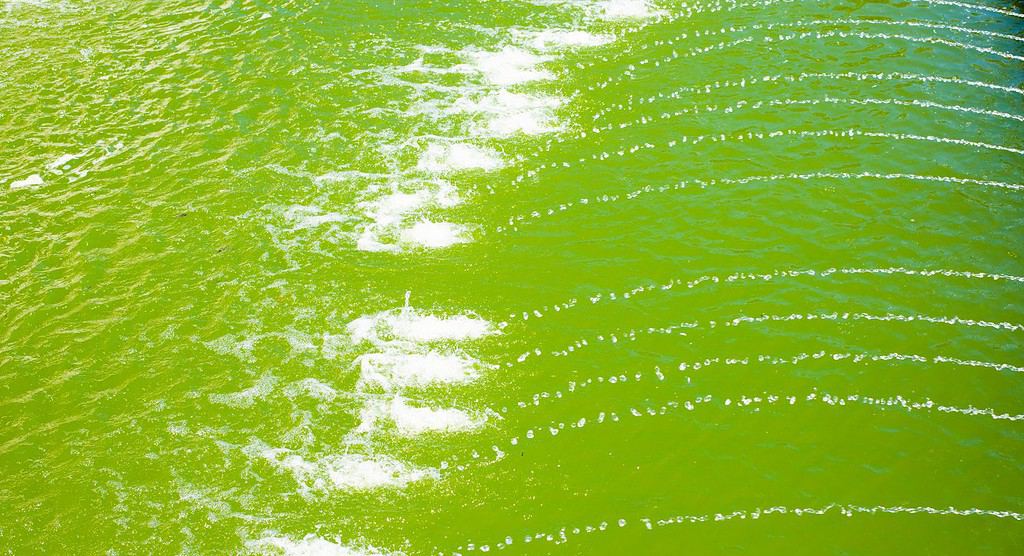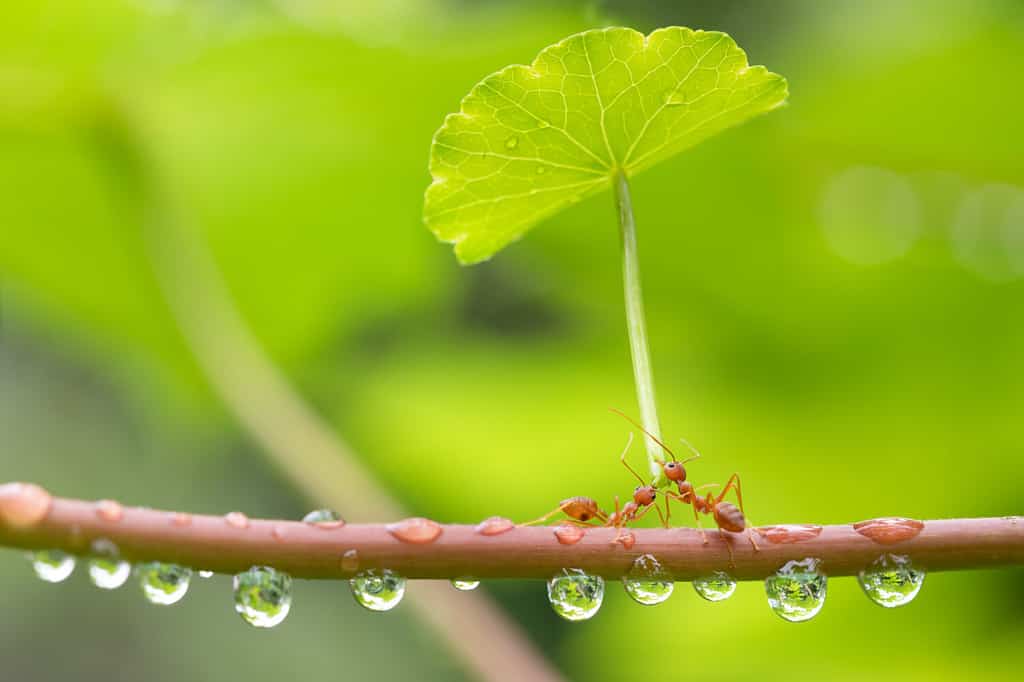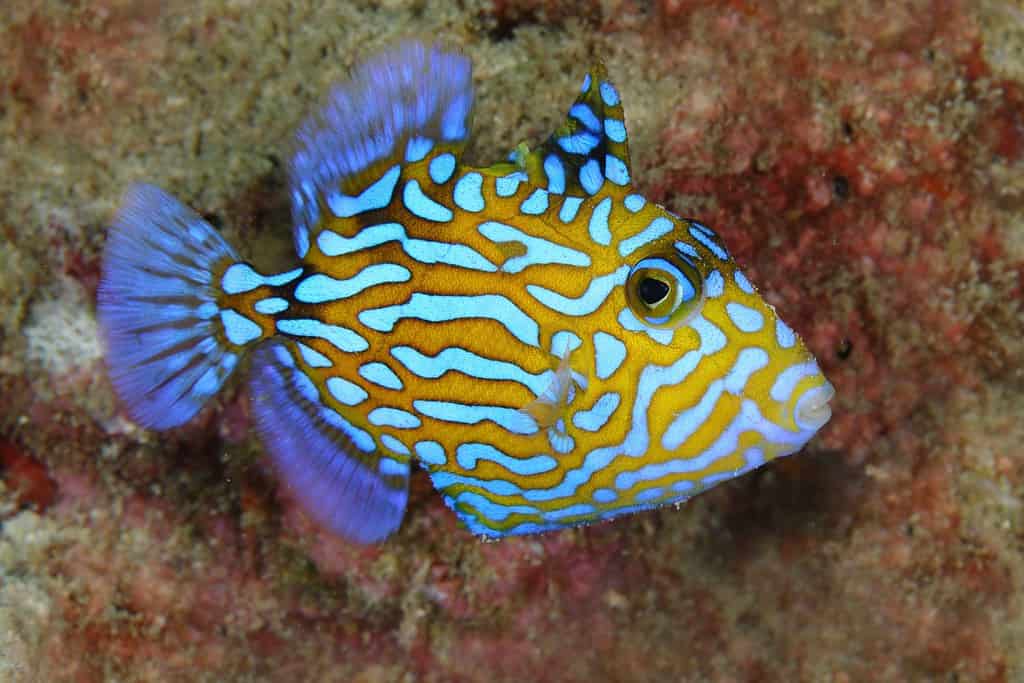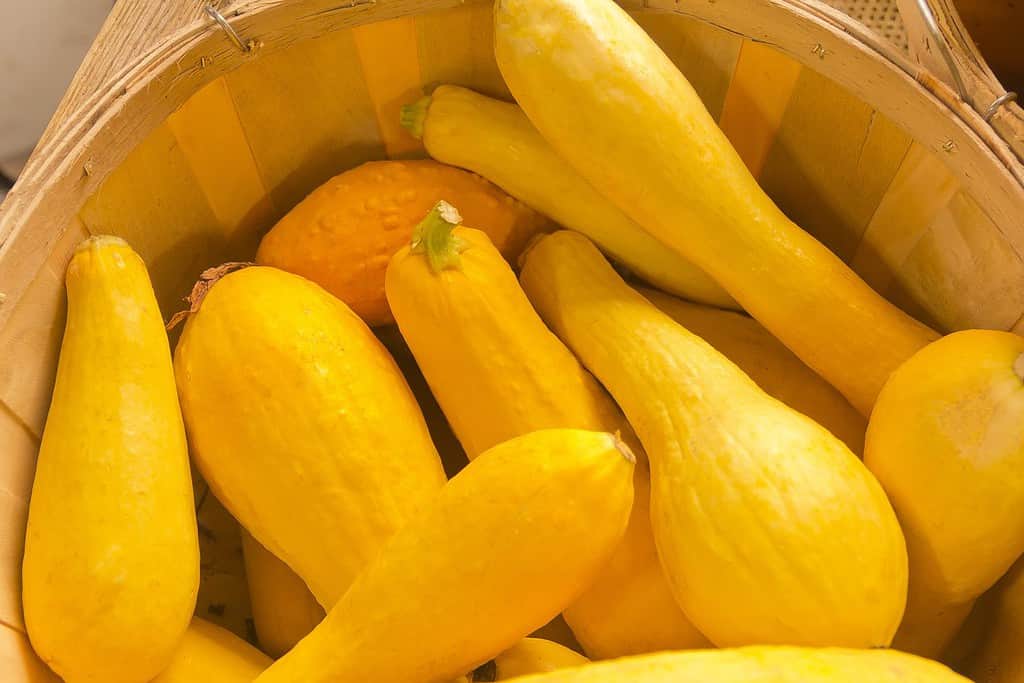“Nature’s first green is gold.” — Robert Frost, “Nothing Gold Can Stay.” All of the colors on the wheel are found in nature, and many of them are symbolic. They hold significance for people around the world whether that be emotional, religious, or cultural. Certain colors represent new beginnings, and all of those hues can be found in nature. Discover the four colors that represent new beginnings (and where to see them in nature).
1. Green

Green represents growth and rebirth.
©SERASOOT/Shutterstock.com
When plants, trees, and flowers begin to sprout in the spring after a cold and desolate winter, the first hue that appears is green. Green represents renewal, growth, and regeneration. It is associated with nature which itself symbolizes new life and beginnings. Peaceful green restores depleted energy which is why it is so abundant in nature. If a plant or leaf is still green, it is still alive, symbolizing new beginnings.
Green in Nature

Green is the most prolific color found in nature.
©frank60/Shutterstock.com
Chlorophyll, which is involved in the photosynthesis of plants, is the reason that green is the predominant color in nature. Consequently, at certain times of the year, you can find green in almost every plant and most flowers and grasses.
The color is also evident in certain precious metals and jewels, such as emeralds and jade. Green is also found in vegetables such as broccoli, kale zucchini, peppers, green beans, spinach, cabbage, and celery.
Animals reflect this color of new beginnings as well. Birds like parakeets, military macaws, and greater green leafbirds also exhibit this shade. The red-eyed tree frog, the hump-nosed lizard, and the green pug moth also contain shades of green.
Surprisingly, snakes exhibit this shade of green as well. The green anaconda is a deep shade of army green, and the greater green snake sports a vivid hue.
You can find green in insects as well such as the dido longwing butterfly, the buffalo treehopper, the glorious scarab, the green lynx spider, and the green pug moth. Fish reflecting this shade include the green sunfish, the orange-lined triggerfish, the emerald catfish, and the common dolphinfish.
Interesting additional green items in nature include parsley, kiwis, seaweed, fennel, olives, artichokes, dill, green tea, and edamame beans.
2. White

White is a color associated with a clean slate.
©LifeCollectionPhotography/Shutterstock.com
To many purists, white is not even considered a color because it represents the absence of hue and cannot be concocted from the three primary colors. However, we can clearly “see” white, and it brings emotions and connotations of new beginnings. White is associated with purity, innocence, and peace. Having a “clean slate” evokes the color white.
Additionally, consider weddings. A bride normally wears white, and the shade is usually prevalent in both the decorations and the food, such as the main wedding cake. Weddings — and the white that goes with them — certainly represent the new beginning of a couple’s life together.
White in Nature

Numerous animal species found in nature are white.
©iStock.com/Alexey_Seafarer
This color of new beginnings is prevalent throughout nature, especially in a myriad of animals. Many birds possess this hue, such as swans, American white pelicans, certain types of egrets, snowy owls, white tigers, whooping cranes, and the white ibis.
The beluga whale is the only white whale or dolphin that is truly white. Another white animal near the ocean are harp seals, which get a little darker as they get older. Polar bears possess that rich, snowy white coat with which everyone is familiar. Sheep, pigeons, arctic wolves, white yaks, and white park cattle are more animals that reflect this color.
Nature provides even more white animals, some of which are even domesticated. The Camargue horse still lives in semi-feral conditions, but the Persian cat, great Pyrenees, and Samoyed dog display their shade both inside and out. The mountain goat, leucistic Texas rat snake, albino deer, and albino alligator are also animals where white can be found in nature.
Nature features a plentiful amount of white that does not walk the land or swim the sea. For instance, plenty of plants and flowers contain this alabaster color. Some of these are dahlias, white carnations, daisies, white roses, hibiscus, wisteria, heliotropes, dogwood blooms, magnolia blooms, and hydrangeas.
Edible plants and vegetables that contain the snowy hue are white eggplants, cauliflowers, and button mushrooms. Other food-related items we see in nature are white rice and eggshells. Several stones, as well, show themselves in nature such as quartz, marble, sandstone, and limestone.
Gemstones such as pearls and diamonds contain this shade as do bones and teeth. Lastly, water forms are an interesting group that shows up in nature: clouds, whitecaps, snow, and glaciers.
3. Blue

Blue brings a calmness that can symbolize a fresh start.
©Hector Bottai / CC BY-SA 4.0 – License
This color is associated with fresh starts, new beginnings, and personal growth. Blue promotes confidence, calmness, and clarity, which allows humans to approach these new beginnings with a lucid, centered mind. The shade is also associated with trust and communication, both important qualities when beginning new ventures or relationships.
Embracing change and the willingness to take new risks are associated with blue. After all, the adage “blue skies ahead” carries the connotation of this color being a positive change for good.
Blue in Nature

Juvenile blue triggerfish have multiple vivid blues.
©22August/Shutterstock.com
Even though humans are so drawn to and calmed by the color, blue is relatively rarely found in nature. Many of the animals and plants we see as “blue” technically are not. Plants that appear blue (such as blueberries and eggplant) are actually deep purple. As well, blue animals do not receive their hue from the true color but by physics and the manner that light bounces off of a surface. In fact, less than 1% of the animal kingdom is purported to have truly blue pigment.
However, the color blue is the focus, and nature has much to offer in this indigo category. Several birds possess the cerulean hue, including the peacock, blue and yellow macaw, kingfisher, starling, great blue heron, and bluejay. Starfish, blue crab, and the blue spot puffer are sea creatures that are blue.
“True blue” plants (those with actual blue pigment) are rare, but a couple of examples are the salvia patens and the delphinium “Aurora Blue.” Precious gems in varying shades of blue include sapphire, lapis, and turquoise. Finally, visual blues that can be found in nature include the ocean and the sky.
4. Yellow

Yellow is associated with an optimistic outlook.
©Ezume Images/Shutterstock.com
Warm and accessible, yellow brings to mind emotions of joy and optimism. The yellow sun is seen as a symbol of new beginnings and happiness as in “tomorrow’s a new day” and “sunny side of life.” Although yellow retains some negative associations, yellow’s reflection of the color of spring symbolizes new beginnings.
Yellow in Nature

Nature provides us with many examples of the color yellow.
©neil bowman/iStock via Getty Images
The golden hue of yellow is found in nature in plants, flowers, animals, vegetables, and fruits. A few plants and flowers with that sunny hue include begonias, chrysanthemums, dahlias, dandelions, daisies, golden shield lichen, golden trumpet trees, tulips, sunflowers, yellow leaves, and pansies.
Animals that display yellow include American goldfinches and yellow warblers, canaries, cockatiels, golden retrievers, neotropical parrots, and palomino horses. Vegetables and fruits also provide plenty of amber-hued options. Bananas, honeydew melons, lemons, mangoes, corn, honey, passion fruit, pears, pineapples, potatoes, summer squash, and yellow bell peppers all reflect the optimistic yellow hue.
Some interesting places to find yellow in nature include amber, a fossilized tree resin; citrine quartz; gold; pyrite (“fool’s gold”); turmeric; and sulfur.
Summary of Colors That Represent New Beginnings
| Color | Symbolizes |
|---|---|
| Green | Renewal and Regrowth |
| White | Purity and “Clean Slate” |
| Blue | Confidence and Clarity |
| Yellow | Joy and Optimism |
The photo featured at the top of this post is © Sean Pavone/iStock / Getty Images Plus via Getty Images
Thank you for reading! Have some feedback for us? Contact the AZ Animals editorial team.







